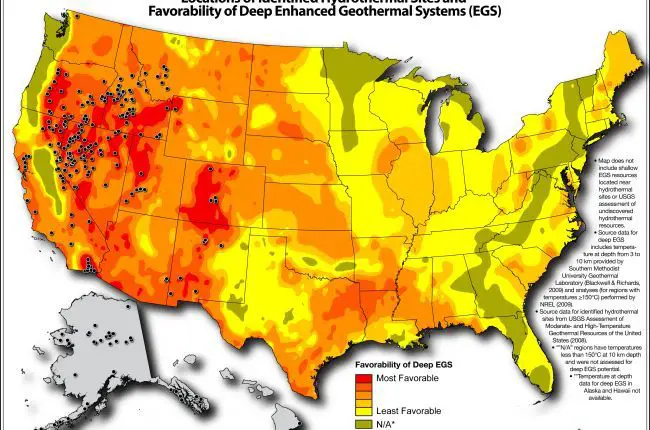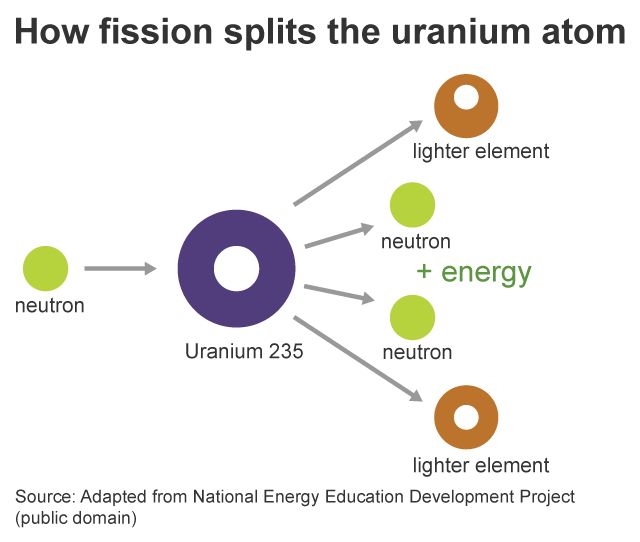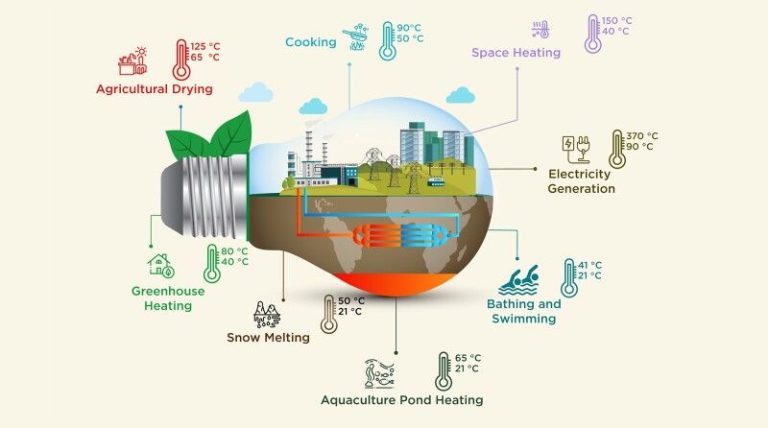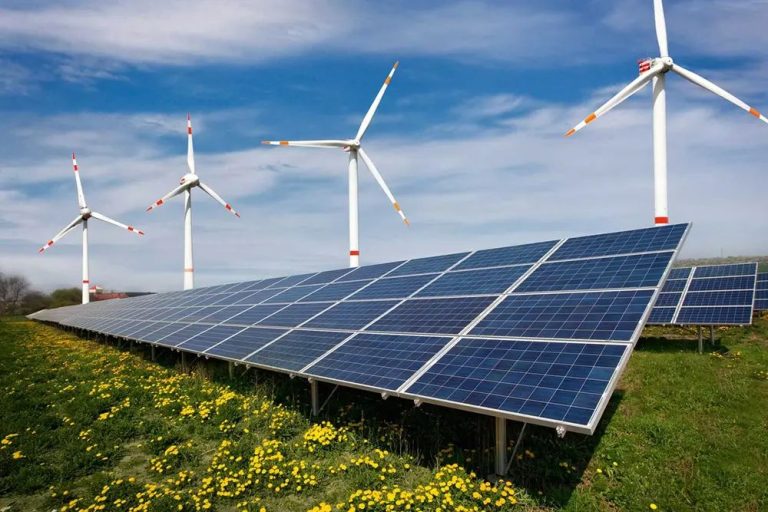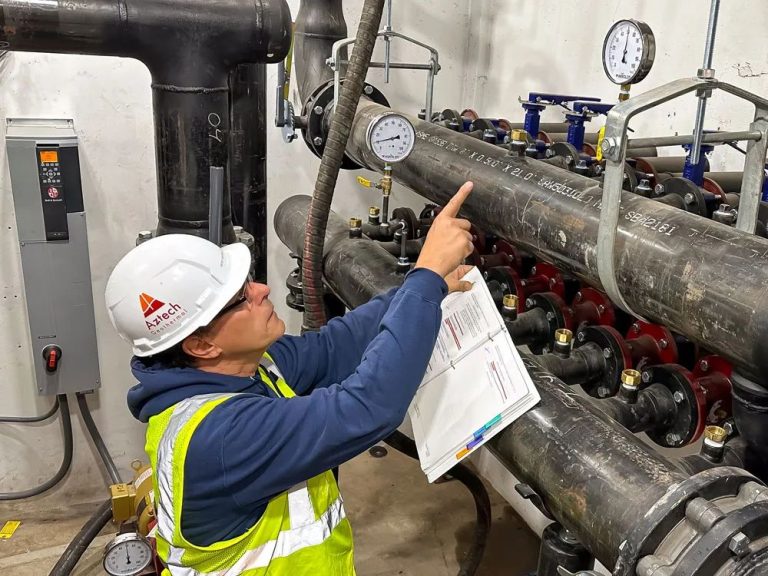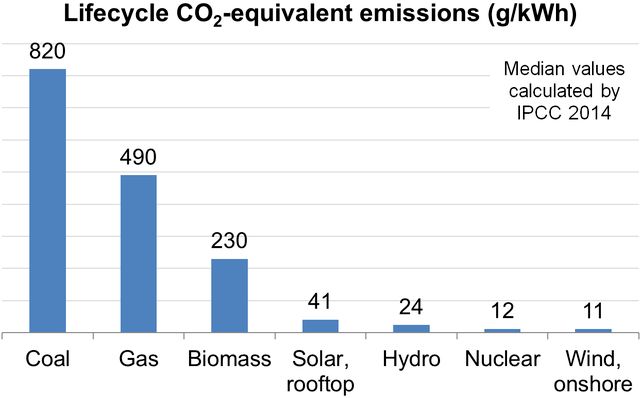What Is Geothermal Power As A Source Of Energy?
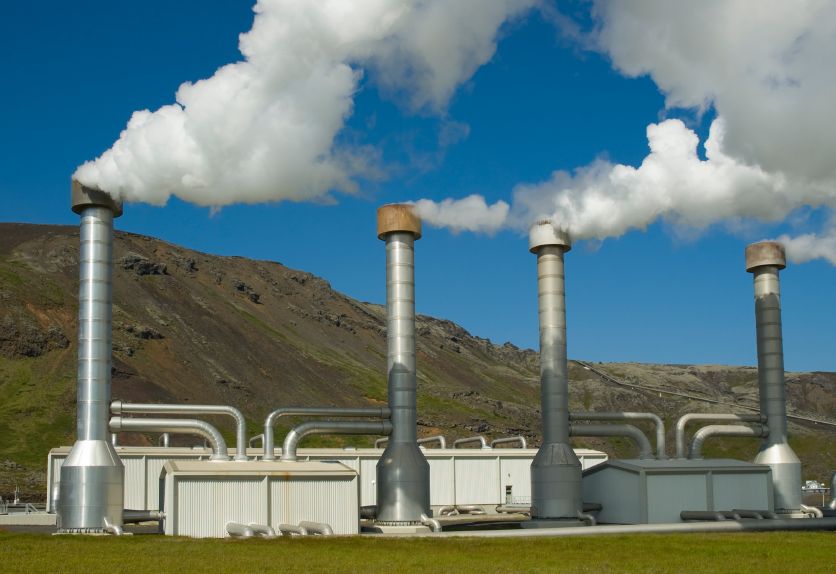
Geothermal energy is thermal energy generated and stored in the Earth. The word “geothermal” comes from the Greek words geo (earth) and therme (heat). Geothermal energy is a renewable energy source that utilizes the heat within the earth for electricity production and direct heating applications.
Humans have been using geothermal energy for thousands of years, from hot springs for bathing to district heating systems in ancient Rome. But large-scale electricity production from geothermal energy is a relatively recent development, with the first geothermal power plant opening at Larderello, Italy in 1904.
As of 2021, geothermal energy provided about 0.3% of global electricity production. The installed global geothermal power capacity was about 16 GW, with the United States, Indonesia, Turkey, and New Zealand as the leading producers. Geothermal energy is also used extensively for heating buildings, greenhouses, fish farms and other applications. The direct use of geothermal heat more than doubles geothermal’s overall global energy contribution.
How Geothermal Power Plants Work
Geothermal power plants harness geothermal energy from underground reservoirs to generate electricity. There are three main types of geothermal power plants:
Flash Power Plants
Flash power plants are the most common, making up about 65% of global geothermal capacity1. They use water at temperatures above 360°F (182°C) that is trapped in fractured or porous rocks. The hot water turns to steam as pressure drops when brought to the surface. The steam spins a turbine which activates a generator to produce electricity.
Dry Steam Power Plants
Dry steam power plants use steam from underground steam reservoirs to directly spin turbines. This type only works in rare locations where naturally occurring steam is available. The first geothermal power plant established at Larderello in Italy in 1904 was a dry steam plant1.
Binary Cycle Power Plants
Binary cycle power plants are often used for water between 225-360°F (107-182°C). They use hot water to heat a separate fluid with a lower boiling point in a closed loop system. This causes the secondary fluid to vaporize which spins the turbine. The water and its heat is then returned to the reservoir.
Geothermal Energy Sources
Geothermal energy utilizes the natural heat within the Earth’s crust to generate clean and renewable electricity. The high temperatures are derived from two primary sources:
Volcanic regions, hot springs, and geysers
Areas with active or geologically young volcanoes, hot springs, and geysers provide accessible sources of very high temperature fluids and steam that can be captured for electricity production. The geothermal reservoir is naturally replenished by the Earth’s internal heat. Examples include The Geysers in California which supplies power to San Francisco.
Hot dry rock and magma
Even areas without obvious surface activity have hot dry rock at various depths where high temperatures are trapped and thermal energy can be tapped. Wells can be drilled into the rock and cold water injected; the heated water is then pumped back up to the surface where its energy powers turbine generators. However, these engineered reservoirs may deplete over time. Supercritical magma deeper below also provides an immense source of geothermal potential.
Each type of source has its advantages and disadvantages in terms of accessibility, costs, environmental impacts, and long-term sustainability. Direct use of volcanic/hydrothermal resources is preferable where available because the system is naturally recharged, while hot dry rock sources require more engineering and maintenance and may deplete over decades of operation. The extreme depths to reach magma make its energy potential theoretically huge but also currently impractical to harness.
Global Geothermal Power Capacity and Usage
The top countries leading in geothermal power capacity as of 2022 are the United States, Indonesia, the Philippines, Turkey, and New Zealand [1]. The United States leads with over 3,900 megawatts (MW) of installed capacity, followed by Indonesia with 2,418 MW. Other major geothermal countries include Iceland, Italy, Mexico, Kenya, Japan, and Chile.
Global geothermal power capacity has seen steady growth over the past decade. According to projections, global geothermal capacity is expected to reach 18,500 MW by 2025 and continue growing to over 26,900 MW by 2030 [2]. Key drivers of this growth include increasing energy demand, government incentives, and technological advances enabling enhanced geothermal systems and development of new resources.
Many countries are looking to expand their geothermal capacity to meet renewable energy and decarbonization goals. High potential markets include Indonesia, the Philippines, East African countries like Kenya, and parts of South America and Central America. While growth is expected across global markets, expansion may be constrained by project development costs and risks which require government support.
Environmental Impacts
Geothermal energy has a significantly lower carbon footprint compared to fossil fuels. The emissions from geothermal plants are substantially lower per kWh generated because no fuel is combusted. While geothermal sites do release some carbon dioxide and methane, the carbon intensity is estimated to be just 5-10% of natural gas plants and 1-2% of coal plants.
There are some emissions from the infrastructure construction, transportation of equipment, and drilling operations. But overall, geothermal power contributes far fewer greenhouse gases than conventional methods. This makes geothermal an attractive option for reducing carbon emissions and mitigating climate change.
Water usage is another consideration, as geothermal plants require water during the drilling, extraction, and reinjection phases. However, binary power plants use closed-loop systems that recycle the water. This greatly minimizes water consumption, especially compared to fossil fuel plants which lose substantial amounts of water through evaporation in cooling towers.
There can also be impacts on land use and the local environment from geothermal development. Drilling rigs and pipelines may disrupt natural habitats and geothermal fluids can release gases or contain salts/minerals that must be disposed of properly. Proper siting, mitigation strategies, and recycling technologies can help minimize the land impacts. Overall, the footprint of geothermal plants is small compared to other energy sources.
Advantages of Geothermal
Geothermal energy offers several key advantages over conventional power generation methods:
Renewable – Geothermal energy is considered renewable, as heat is continuously produced inside the earth. With appropriate reservoir management, geothermal plants can generate base load power indefinitely.
Reliable Base Load Power – Geothermal plants provide continuous base load power, unaffected by weather conditions and fluctuations in sunlight or wind. Capacity factors for geothermal plants can reach 90-98%, compared to around 30% for solar and wind.
Low Emissions – Geothermal energy harnesses heat inside the earth in a closed loop system, so it produces very little emissions and none of the carbon dioxide and other greenhouse gases associated with burning fossil fuels.
Small Land Footprint – Although geothermal plants require drilling, the above-ground plant infrastructure uses less land area per kilowatt generated compared to coal, nuclear, or large-scale solar. Reservoirs can be built underneath existing infrastructure as well.
Disadvantages and Challenges
While geothermal power offers many benefits, it also comes with some downsides and limitations that have prevented more widespread adoption globally. Some of the main disadvantages and challenges of geothermal energy include:
High upfront costs – Constructing a geothermal power plant requires significant upfront capital investment. Drilling exploratory wells and building the power plant infrastructure can cost hundreds of millions of dollars before any electricity is even generated. This makes financing challenging.
Limited to geographic locations – Geothermal reservoirs with ideal temperatures and geologic conditions are not evenly distributed around the world. Viable locations are concentrated in tectonically active regions like western North America, East Africa, and Southeast Asia. This geographic limitation restricts broader deployment.
Resource depletion over time – Geothermal reservoirs can deplete over decades of continuous production. New wells may need to be drilled to find additional resources. Long-term resource management is crucial for plant viability.
Induced seismicity – In rare cases, high pressure injection of geothermal fluids deep underground can induce small earthquakes. These are generally less than 3.0 magnitude and cause little to no damage. But the possibility remains a public concern.
Recent Innovations and Improvements
Several promising innovations in geothermal technology have emerged in recent years, helping to maximize efficiency and expand viable locations.
One major area of innovation is enhanced geothermal systems (EGS), also known as engineered geothermal systems. With EGS, wells are drilled into hot dry rock reservoirs that lack natural permeability and fluid saturation. The rock is then hydraulically fractured to create an artificial geothermal reservoir capable of producing energy.
Hybrid power plants are another advancement, combining geothermal energy with other sources like solar or biomass. These hybrid plants allow for more flexible and reliable operation.
Drilling technologies have also improved drastically, with directional drilling and high-temperature drill bits extending reachable depths. Drilling accounts for up to half the total cost of geothermal projects, so these drilling enhancements help substantially lower development costs.
With such innovations, geothermal energy can be harnessed from a wider range of geological conditions and resources. This expands the viability and scalability of geothermal power generation worldwide.
Future Outlook and Growth Potential
The future outlook for geothermal power capacity and growth is promising. According to the International Renewable Energy Agency, global geothermal power capacity is projected to grow from 14.6 GW in 2020 to almost 60 GW by 2030, representing a fivefold increase.
The U.S. Department of Energy has set a goal to double geothermal power generation in the United States to 60 million MWh/year by 2050, which would require significant expansion of geothermal capacity across the country (Center for Sustainable Systems). This growth is expected to be driven by cost reductions as drilling technologies improve, making enhanced geothermal projects more economically viable.
However, there are still challenges to overcome. High upfront capital costs remain a barrier, and accessing optimal geothermal resources often requires drilling deeper wells. Ensuring long-term productivity of reservoirs through sustainable operating practices is also an area of focus.
Recent innovations like closed-loop geothermal systems in new building developments, modular power units that can tap into low-temperature reservoirs, and hybrid geothermal-solar systems hold promise for unlocking new geothermal capacity. With continued technology improvements and policy incentives, geothermal is poised to play a growing role in renewable energy production worldwide.
Conclusion
Geothermal energy offers a clean, renewable energy source that avoids the air pollution and environmental impacts of burning fossil fuels like coal and gas. The key points discussed show that geothermal power works by tapping heat beneath the Earth’s surface and using it to generate electricity.
While geothermal energy capacity currently makes up a small percentage of renewable sources globally, it offers potential for significant growth in certain geographies where subsurface heat is abundant. With innovations to enhance productivity of geothermal reservoirs and reduce high upfront drilling costs, this baseload renewable power source could play an important role in the global transition to a clean energy future.
Overall, geothermal power offers many benefits as part of the renewable energy mix, including its ability to provide constant baseload power not impacted by weather, zero emissions, and the potential to be scaled up over time to meet increasing energy demands in a sustainable way.

